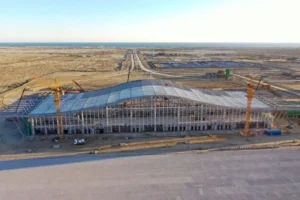
The Gas Turbine Research Establishment (GTRE), under the aegis of the Defence Research and Development Organisation (DRDO), is on the verge of completing a state-of-the-art 130kN Twin Engine Test Bed Facility in Rajankunte, Bangalore.
The facility, which commenced construction in September 2023, is designed to accommodate the testing of engines with thrust capabilities up to 130kN. This capability is crucial for projects such as the revamped dry version of the Kaveri engine and the prospective engines for the Advanced Medium Combat Aircraft (AMCA), which are pivotal to India’s military aviation strategy.
Spread over acres in Rajankunte, the facility is equipped with the latest in testing technology, including sophisticated data acquisition systems, high-resolution sensors, and advanced control systems for precise engine performance analysis. The project has seen collaboration with various academic institutions and industry partners, ensuring that the facility meets global standards in aerospace testing.
With consultancy work kicking off in July 2023, the project has moved swiftly through various phases of planning and construction. The facility is expected to be fully operational by October 2025, setting the stage for rigorous testing phases of the Kaveri engine and future AMCA engines.
This test bed will not only serve the immediate needs of ongoing engine development programs but also bolster India’s position in the global aerospace industry. It opens avenues for potential collaborations, technology exports, and positions India as a hub for aerospace research and development.
Dr. Arvind Singh, Director of GTRE, expressed enthusiasm about the project, stating, “This facility is a testament to our commitment to excellence in aerospace technology. It will be instrumental in pushing the boundaries of what’s possible in engine technology for both military and potentially civilian applications.”
GTRE plans to develop multiple engines as part of its roadmap for indigenous defence production, with a focus on achieving technological sovereignty. The test bed’s capabilities will facilitate a more efficient development process, reducing both time and costs associated with engine development.





